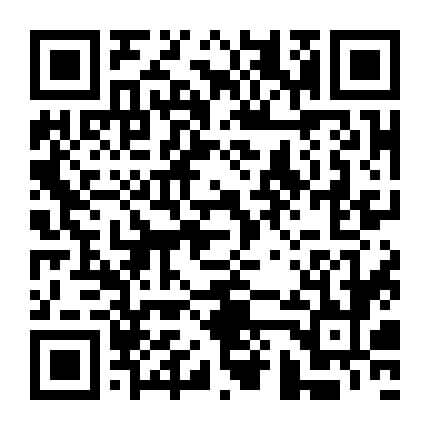2010年全国统考医学考博英语真题
- 1
- 6
- 8
摘要:考博英语真题是每位考生必背的复习资料,希赛网考博英语频道为大家整理2010年全国医学博士英语统一考试真题,详情如下:
希赛网英语频道为同学们整理了全国医学考博英语统一考试真题,请同学们多多复习.专心备考。
Part II Vocabulary (10%)
Section A
Directions: In this section, all the sentences are incomplete. Four words or phrases marked A, B, Cand D are given beneath each of them. You are to choose the word or phrase that best completes the sentence ,then mark your answer on the ANSWER SHEET.
31.A number of black youths have complained of beingby the police.
A.harassedB. distractedC. sentencedD. released
32.He rapidly becamewith his own power in the team.
A.irrigatedB. irradiatedC. inoculatedD. intoxicated
33.Throughout his political career he has always been in the.
A.twilightB. spotlightC. streetlightD. torchlight
34.Wethat diet is related to most types of cancer but we don’t have definite proof.
A.suspendB. superveneC. superviseD. suspect
35.A patient who is dying of incurable cancer of the throat is in terrible pain, which can no longer be satisfactorily .
C. demolishedD. diminished
39.You should stopyour condition and do something about it.
A. drawing onB. touching onC. leaning onD. dwelling on
40.The author of the book has shown his remarkably keeninto human nature.
A. perspectiveB. dimensionC. insightD. reflection
Section B
Directions: Each of the following sentences has a word or phrase underlined. There are four words or phrases beneath each sentence. Choose the word or phrase which can best keep the meaning of the original sentence if it is substituted for the underlined part. Mark your answer on the ANSWER SHEET.
41.The chemical was found to be detrimental to human health.
A.toxicB. immuneC. sensitiveD. allergic
42.It will be a devastating blow for the patient, if the clinic closes.
A.permanentB.desperateC. destructive
43.He kept telling us about his operation, in the most graphic detail.
A. verifiableB.explicit0. precise
44.The difficult case tested the ingenuity of even the most skillful physician.
A. credibilityB. commitmentC. honesty
45.He left immediately on the pretext that he had to catch a train.
A. claimB.clueC. excuse
46.The nurse was filled with remorse of not believing her.
A. anguishB. regretC. apology
47.The doctor tried to find a tactful way of telling her the truth.
A. delicateB.communicativeC. skillful
48.Whether a person likes a routine office job or not depends largely on temperamGt.
A. dispositionB.qualificationC. temptationD. endorsement
49.The doctor ruled out Friday5 s surgery for the patient5 s unexpected complications.
A. confirmedB.facilitatedC. postponedD. cancelled
50.It is not easy to remain tranquil when events suddenly change your life.
A. cautiousB.motionlessC. calmD. alert
Part in Cloze (10%)
Directions: In this section there is a passage with ten numbered blanks. For each blank, there are four choices marked A,B,C and D on the right side. Choose the best answer and mark the letter of your choice on the ANSWER SHEET.
Experts say about 1% of young women in the United States are almost starving themselves today. They are suffering from a sickness called anorexia. These young women have an abnormal fear of getting fat. They 51 starve themselves so they
weigh at 15% less than their normal weight.The National Institute of Mental Health says one 52 ten cases of anorexia leads to serious medical problems. These patients can die from heart failure or the disease can lead young women to 53 themselves. For example, former gymnast Christy Henrich died at age 22. She weighed only 61 pounds. A person with anorexia first develops joint and muscle problems. There is a lack of iron in the blood. 54 the sickness progresses, a young woman5 s breathing, heartbeat, and blood pressure rates slow down. The important substance calcium is 55 from the bones, something causing bones to break. Sometimes the brain gets smaller, causing changes in 56 a person thinks and acts. Scientists say many patients have further mental and emotional problems. They have 57 opinions about themselves.
They feel helpless. Their attempts to become extremely thin may 58 efforts to take control of their lives. They may become dependent on illegal drugs. Some people also feel the need to continually repeat a( n)59. For example, they may repeatedly wash their hands although their hands are clean.Anorexia is a serious eating 60. If it is not treated on time, it can be fatal.
51.A. specificallyB. purposelyC. particularlyD. passionately
52.A. fromB. ofC. atD. in
53. A. kill巳.starveC. abuseD. worsen
54. A. WhenB. WhileC. AsD. Since
55. A. lostB. derivedC. generatedD. synthesized
56. A. whatB. whyC. howD. which
57. A. goodB. highC. lowerD. poor
58. A. representB. makeC. presentD. exert
59. A. medication B.illusion0. motionD. action
60. A. habitB. behaviorC. disorderD. pattern
Part IV Reading Comprehension (30%)
Directions: In this part there are six passages, each of which is followed by five questions. For each question there are four possible answers marked A, B, C and D. Choose the best answer and mark the letter of your choice on the ANSWER SHEET.
Passage One
Children should avoid using mobile phones for all but essential calls because of possible health effects on young brains. This is one of the expected conclusions of an official government report to be published this week. The report is expected to call for the mobile phone industry to refrain from promoting phone use by children, and to start labeling phones with data on the amount of radiation they emit.
The Independent Expert Group on Mobile Phones, chaired by former government chief scientist William Stewart, has spent eight months reviewing existing scientific evidence on all aspects of the health effects of using mobile phones. Its report is believed to conclude that because we don’t fully understand the nonthermal effects of radiation on human tissue, the government should adopt a precautionary approach ,particularly in relation to children.There is currently no evidence that mobile phones harm users or people living near transmitter masts. But some studies show that cell-phones operating at radiation levels within current safety limits do have some sort of biological effect on the brain.
John Tattersall, a researcher on the health effects of radiation at the Defense Evaluation and Research Agency’s site at Porton Down, agrees that it might be wise to limit phone use by children. “If you have a developing nervous system, it ’ s known to be more susceptible to environmental insults," he saysso if phones did prove to be hazardous—which they haven’t yet—it would be sensible.
In 1998, Tattersall showed that radiation levels similar to those emitted by mobile phones could alter signals from brain cells in slices of rat brain, “what we’ve found is an effect, but we don’t know if it5 s hazardous,” he says.
Alan Preece of the University of Bristol, who found last year that microwaves increase reaction times in test subjects, agreed that children5 s exposure would be greater. "There5 s a lot less tissue in the way, and the skill is thinner, so childrenJ s heads are considerably closer,” he says. Stewart5 s report is likely to recommend that the current British safety standards on energy emissions from cell-phones should be cut to the level recommended by the International Commission on Non-Ionizing Radiation Protection, which is one-fifth of the current British limit. “The extra safety factor of five is somewhat arbitrary," says Michael Clark of the National Radiological Protection Board. “ But we accept that it’s
difficult for the UK to have different standards from an international body. ”
61.Just because it has not been confirmed yet whether mobile phone emissions can harm human tissue according to the government report, does not mean that.
A.the government should prohibit children from using cell-phones
B.we should put down the phone for the sake of safety
C.the industry can have a right to promote phone use
D.children are safe using cell-phones
62.Tattersall argues that it is wise to refrain mobile phone use by children in terms of
A. their neural development
C. the frequency of their irrational use
B.their ill-designed cell-phones
D. their ignorance of its possible health effects
63.On the issue in question, Preece
A.does not agree with Tattersall
B. tries to remove the obstacles in the way
C.asks for further investigation
D. would stand by Stewart
64.What is worrisome at present is that the UK.
A.is going to turn deaf ears to the voice of Stewart5 s plan
B.finds it difficult to cut the current safety standards on phone use
C.maintains different standards on safety limit from the international ones
D.does not even impose safety limit on the mobile phones’ energy emissions
65.Which of the following can be the best candidate for the title of the passage?
A. Brain WaveB. For Adults Only
C. Catch Them YoungD. The Answer in the Air
Part IV Reading Comprehension (30%)
Passage Two
Advances in cosmetic dentistry and plastic surgery have made it possible to correct facial birth defects ,repair damaged teeth and tissue, and prevent or greatly delay the onset of tooth decay and gum disease. As a result, more people smile more often and more openly today than ever in the past, and we can expect more smiles in the future.Evidence of the smile5 s ascent may be seen in famous paintings in museums and galleries throughout the world. The vast majority of prosperous bigwigs (要人),voluptuous nudes, or middle-class family members in formal portraits and domestic scenes appear to have their mouths firmly closed. Soldiers in battle, children at play, beggars, old people, and especially villains may have their mouths open; but their smiles are seldom attractive, and more often suggest strain or violence than joy.
Smiles convey a wide range of meanings in different eras and cultures, says art historian Angus Trumble, currently curator (馆长)of Yale University5 s Center for British Art, in his book A Brief history of the Smile. Compare, for instance, the varying impressions made by the shy dimples (酒窝)of Leonardo5 s Mona Lisa; the rosy-cheeked, mustachioed Laughing Cavalier of Frans Hals; and the “Smiley Face” logo perfected (though not invented) in 1963 by American graphic artist Harvey R. Ball.
In some non-Western cultures, Trumble notes, even a warm, open smile does not necessarily indicate pleasure or agreement. It can simply be a polite mask to cover emotions considered too rude or shocking to be openly displayed.
Subtle differences in muscle movement can convey enormous differences in emotion, from the tranquility of bronze Buddhas, to the erotic bliss of couples entwined in stone on Hindu temples, to the fierce smirk (假笑)of a guardian demon at the entrance to a Chinese tomb. Trumble expects the impact of Western medicine and mass media to further increase the pressure on people to grin broadly and laugh openly in public. “ Faint smiles are increasingly thought of in scientific and psychological circles as something that falls short of the true smile," and therefore suggest insincerity or
lack of enthusiasm, he says.
With tattooing, body piercing, and permanent cosmetics already well established as fashion trends, one can imagine tomorrow5 s beauty shops adding plastic surgeons and dentists to their staffs. These corner-store cosmeticians would offer style makeovers to reshape our lips, teeth, and jawlines to mimic the signature smile of one’s favorite celebrity.
What can you say to that except ** Have a nice day?”
66.Had it not been for cosmetic advances, as inferred from the passage, .
A.people would not have been as happy as they are today
B.the rate of facial birth defect would not have declined
C.there would not have been many more open smiles
D.we would not have seen smiling faces in public
67.According to the passage, it seems that whether there is a smile or not in the portraits or pictures is decided by.
A.one’s internal sense of the external world B.one’s identity or social position
C. one’s times of existenceD. All of the above
68.Trumble’ s study on smiles shows that.
A.an open smile can serve as a cover-up
B.the famous portraits radiate varying smiles
C.even the human muscles can arouse varying emotions
D.smiles can represent misinterpretations of different eras and cultures
69.What Trumble expects to see is.
A. the increasing tendency of broad grins and open smiles in public
B.further impact of Western medicine upon non-Western cultures
C.a wider range of meanings to be conveyed by smiles
D.more of sincerity and enthusiasm in public
70.At the end of the passage, the author implicates.
A. a fortune to come with cosmetic advancesB. an identical smile for everybody
C. future changes in life styleD. the future of smile
Part IV Reading Comprehension (30%)
Passage Three
Adolf Hitler survived an assassination attempt in 1944 with the lamp of penicillin made by the Allies, a microbiologist in the UK claims. If the Nazi leader had died from bacterial infection of his many wounds, the Second World War might have been over a year earlier, saving millions of lives, says Milton Wainwright of the University of Sheffield, a noted historian of microbiology. In a paper to be published soon in Perspectives in Biology and Medicine, Wainwright reveals firsthand evidence that Hitler was treated with penicillin by his personal doctor, Theo Morrell, following an assassination attempt in which a bomb in a suitcase exploded next to Hitler5 s desk. Hitler was badly hurt, fleeing the scene with his hair and trousers on fire, a badly bleeding arm and countless wooden splinter wounds from the oak table that probably saved his life.
Wainwright found confirmation that Morrell gave Hitler antibiotics as a precaution in a recent translation of Morrell’s own diary. “I happened to be reading it for interest when the word penicillin jumped out at me, ” he says. He then set about trying to establish where Morrell might have got the drug. At the time, penicillin was available only to the Allies. German and Czechoslovakian teams had tried without much success to make it, Wainwright says, but the small quantities that were available were weak and impure. “It’s generally accepted that it was no good,” says Wainwright. He reasons that Morrell would only have risked giving Hitler penicillin to prevent infections if he were confident that the antibiotic would cure, not kill the German premier. “My research shows that Morrell, in a very dodgy (危险的)position as Hitler5 s doctor, would only have used pure stuff.H And the only reliable penicillin was that made by the Allies. So where did Morrell get it?
Wainwright’s investigations revealed that Allied airmen carried penicillin, so the Germans may have confiscated some from prisoners of war. The other more likely source is from neutral countries such Spain, which received penicillin from Allied countries for humanitarian purposes, perhaps for treating sick children.
“I have proof the Allies were sending it to these countries,” says Wainwright. “I’m saying this would have got through in diplomatic bags, reaching Hitler1 s doctor and the higher echelons (阶层)of the Nazi party. So this was almost certainly pure, Allied penicillin.H "We can never be certain it saved Hitler’s life,” says Wainwright. But he notes that one of Hitler5 shenchmen (死党),Reinhard Heydrich, died from blood poisoning after surviving a car-bomb assassination
attempt. “Hair from his seat went into his wounds and gave him septicemia,n says Wainwright. Morrell may have been anxious to ensure that Hitler avoided the same fate.
71.According to Wainwright, Adolf Hitler.
A.might have used biological weapons in the war
B.could not have committed suicide as confirmed
C.could have died of bacterial infection
D.might have survived a bacterial plague
72.Following his assassination in 1944, Adolf Hitler.
A. began to exercise precautions against his personal attacks
B.was anxious to have penicillin developed in his country
C.received an injection of penicillin for blood poisoning
D.was suspected of being likely to get infected
73.As Wainwright reasons, Hitler’s personal doctor.
A. cannot have dared to prescribe German-made penicillin to him
B.need not have used pure antibiotic for his suspect infection
C.would have had every reason to assassinate him
D.must have tried to produce penicillin
74.Wainwright implies that the Third Reich.
A.met the fate of collapse as expected
B.butchered millions of lives on the earth
C.was severely struck by bacterial plagues
D.did have channels to obtain pure penicillin
75.Which of the following can be the best title for the passage?
A. How Hitler Manage to Survive Assassination Attempts?
B.Morrell Loyal to His German Premier?
C.Hitler Saved by Allied Drugs?
D.Penicillin Abused in German?
Part IV Reading Comprehension (30%)
Passage Four
Get ready for a new kind of machine at your local gym: one that doesn’t involve huffing and puffing as you burn off calories. Instead, all you have to do is stand still for 30 seconds while the machine measures your body fat. It could then tell you exactly where you could do with losing a few pounds and even advise you on exercises for your problem areas. If the body fat scanner turns out to be accurate enough, its makers hope it could one day help doctors spot disease.
The scanner works by simultaneously building up an accurate 3D image of the body, while measuring the body’s effect on an electromagnetic field. Combining the two measurements allows the researchers to work out the distribution of fat and water within. Neither method is new on its own, says Henri Tapp, at the Institute of Food Research in Norwich in the UK. "The smart thing is that we5 ve put them in one machine.,’And it5 s not just for gym users. The body fat scanner could be used to study fat deposition as children develop, while patients recover from injury, or during pregnancy. And since it uses radio waves rather than X-rays, Tapp’s device is safe to use repeatedly.
Body shape is known to be a risk indicator for heart disease and diabetes. So accurately quantifying fat distribution could help doctors suggest preventive measures to patients before problems arise. At the moment, doctors estimate fat content from knowing body volume and water content. To a good approximation ,says Tapp, anything that isnJt fat is water. The amount of water in the body is often measured by giving the subject a drink of water that contains a radioactive tracer. The level of tracer in the patient5 s urine after three hours reveals the total water volume.To find out a body5 s volume, subjects are weighed while totally submerged in water, and this is subtracted from their normal weight to give the weight of water displaced, and hence the subject,s volume. But it is scarcely practical for seriously ill people.There are other ways to directly measure body fat, such as passing a minuscule current between the wrists and feet. The overall fat content can then be estimated from the body’s resistance. But this method doesn’t take body shape into account——so a subject with particularly skinny legs might register a higher fat content than the true value. That5 s because skinny legs—with a lower cross-sectional area—will present higher resistance to current. So the machine thinks the water content of the body is lower—rating the subject as fatter. Also, the system can only give an overall measurement of fat. Tapp’s method uses similar calculations, but is more sophisticated because it tells you where you are piling on the pounds.
76.The new machine is designed.
A.to picture the body5 s hidden fat
B.to identify those at risk for obesity
C.to help clinically treat specific cases
D.to measure accurately risky obesity-related effects
77.The beauty of the device, according to Tapp, is that.
A. it performs a dual function
B.it is of great accuracy in measurement
C.it has significant implications in clinical practice
D.it contributes to the evolution of human anatomy
78.Which of the following, according to the passage, does the machine have the potential to spare?
A. A minuscule current.B.A radioactive tracer.
C. A water tank.D. All of the above.
79.In comparison with the techniques mentioned in the passage, the body fat scanner.
A. quickens the pace of the patient5 s rehabilitation
B.is highly appreciated for its safety
C.features its measuring precision
D.is easy to operate in the clinic
80.For scanning, all the subject has to do is.
A. taking up a form of workout in the gymB.turning round the body fat scanner
C. lying on the electromagnetic fieldD. standing in the system
Part IV Reading Comprehension (30%)
Passage Five
There is currently abroad a new wave of appreciation for breadth of knowledge. Curricula at universalities and colleges and programs in federal agencies extol (赞扬)the virtues of a broad education. For scientists who work in specialized jobs, it is a pleasure to escape in our spare tune to read broadly in fields distant from our own. Some of us have made interdisciplinary study in our occupation, which is no surprise, because much of the intellectual action in our society today lies at the interfaces between traditional disciplines. Environmental science is a good example, because it frequently requires us to be conversant in several different sciences and even some unscientific fields.
Experiencing this breadth of knowledge is stimulating, but so is delving deeply into a subject. Both are wonderful experiences that are complementary practical and aesthetic (美学的)ways. They are like viewing the marvelous sculpture of knowledge in two different ways. Look at the sculpture from one perspective and you see the piece in its entirety, how its components connect to give it form, balance, and symmetry. From another viewpoint you see its detail, depth, and mass. There is no need to choose between these two perspectives in art. To do so would subtract from the totality of the figure. So it is with science. Sometimes we gaze through a subject and are reluctant to stop for too much detail. As chemists, we are fascinated by computer sciences or molecular genetics, but not enough to become an expert. Or we may be interested in an analytical technique but not enough to stay at its cutting edge. At other times, we become immersed in the detail of a subject and see its beauty in an entirely different way than when we browse. It is as if we penetrate the surface of the sculpture and pass through the crystal structure to the molecular level where the code for the entire structure is revealed.
Unfortunately, in our zeal for breadth or depth, we often feel that it is necessary to diminish the value of the other. Specialists are sometimes ridiculed with names such as "nerd” or "technocrats”,generalists are often criticized for being too “soft” or knowing too little about any one thing. Both are ludicrous (可笑的)accusations that deny a part of the reality of environmental science. Let us not be divided by our passion for depth or breadth. The beauty that awaits us on either route is too precious to stifle, too wonderful to diminish by bickering (争吵).
81.From a broad education to interdisciplinary study, we can see.
A. the integration of theory with practice
B.the enthusiasm for breadth of knowledge
C.the rapid division of traditional disciplines
D.the confrontation between specialists and generalists
82.The commentator would say that the totality of the sculpture of knowledge.
A.is mainly composed of two elements
B.presents two different points of view
C.cannot be perceived from one perspective
D.is a whole made up of complementary elements
83.Just because we become engrossed in the detail of a subject, according to the comment, does not mean that we.
A. can have an understanding of itB.will develop into an expert
C. will perceive its entiretyD. are interested in it
84.It is commentator ’ s contention that neither specialists nor generalists.
A.have zeal for the totality of the knowledge sculpture
B.represent the depth and breadth of knowledge
C.are necessarily supposed to belittle the other
D.can be qualified as environmental scientists
85.Which of the following can be the best title for the comment?
A. Interdisciplinary Study as Our Occupation B.Breath and Depth of Knowledge
C. The Ways of Doing ScienceD. The Beauty of Science
Part IV Reading Comprehension (30%)
Passage Six
That shabby unknown bundle of neglect and despair that was dropped off by the police six weeks ago—later to be identified by his mother, who turns up occasionally—is now a driving force on the infants’ward. Once he was bathed a few times and his rashes were treated, he turned out to be a 14-month-old boy named Vergil, still recovering from premature birth——birth weight, 2.5 pounds, it came obvious he had never received any real attention, and practical no solid food, and it was never very clear who assumed responsibility for him in his family, if anyone. Miraculously he survived, with almost no outside help.
At first he just lay there, withdrawn, sucking on an empty bottle as he had been used to doing at home. After a few days it became clear he was ravenously hungry and he downed bottle after bottle of milk. Slowly he began to respond to the ward staff around him who hung over the side of his crib, tempting him back to life.
He started by cautiously chewing on people, sniffing and tasting them warily like a little wild creature. Gradually he climbed to a standing position, pulling himself up on the bars of his crib. Then he began to discover noise——that came from himself. When he learned that it was acceptable, in this place, to scream when enraged, he filled his corner of the room with garbled speech-like sounds, and loud baby-bellows of demand. If nobody responded he would fix each passerby with a coy look that evolved into a seductive grin, revealing four widely space little teeth. Someone always stopped, grinning back at this adorable creature, then picking him up and cuddling him. We on the staff took personal pride and delight in his steady progress.During the day we moved his crib from the infants5 ward to the playroom where there are people coming and going. He loved it, standing and cruising in his crib, commenting happily on the scene, crowing and babbling. One afternoon, when his crib was moved adjacent to the wall, he became unusually quiet, deep in concentration. With the stealth of a cat, using his little fingers like tiny screwdrivers, he had taken apart the wall oxygen unit. Our delight in his progress turned to real respect. Perhaps we could steer him toward the right path before it was too late. Vergil definitely had a future.
86.In the infants’ ward, Vergil.
A. was treated as an orphanB.was born prematurely
C. had himself renamedD.drove the staff busy
87.The ward staff must have been marveled at Vergil5 s.
A. vitalityB.shabbiness
C. premature birthD.physical well-being
88.How did Vergil begin to respond to people?
A. By making loud baby-bellows of demand.
B.By fixing each passerby with a coy look.
C.By sniffing and tasting them.
D.By yelling at them.
89.From the observation made by the physician in the clinic, we can say that Vergil.
A. was appreciative of the ward staff
B.was growing in a favorable environment
C.was growing faster in mind than in body
D.was proud of his physical and mental growth
90.Through the mention of Vergil’s improper act, the writer is trying to imply.
A.the existence of dangers in the infants’ ward
B.the importance of guidance on babies5 growth
C.the acceptance of inborn mischief
D.the existence of a future for him
Part V Writing (20%)
Directions: In this part there is an essay in Chinese. Read it carefully and then write a summary of 200 words in English on the ANSWER SHEET. Make sure that your summary covers the major points of the essay.
新兴学科:药物心理学
药物作用于人体的病变部位,而病人的心理作用会或多或少地影响药物的作用。为了使药物治疗达到最佳疗效,人们必须研究药物心理学,讲究服药心理。现代医药学认为:药物大多能产生两种效应。药物通过其药理作用来达到治病的目的,此为药物的生理作用。药物还可通过其非生理作用,在病人的心理上产生良好的感觉,加速疾病的康复,此为药物的心理效应。药物的心理效应可促使药物取得更好的疗效,为治疗奠定良好的基础。药物的心理效应是指由医生的威信,病人对药物的信任感,接受药物治疗的体验、评价,治疗时外界的暗示及药物的广吿效应等共同作用而产生的综合效应。药物心理学正是建立在药物心理效应基础之上的一门新兴边缘学料。众所周知,用同样的药物,由希赛网、名医开出的效果会更好,这就是药物心理学最简单而明显的例子。
有人做了一个形象的比喻:药物是治疗疾病的“种子”,而心理状态是种子赖以生长、开花和结果的“土壤”。药物的药理作用是药物治疗疾病的基础,而药物的心理效应则在疾病治疗过程中起着十分微妙的作用。特别是在治疗心因性疾病和心理精神疾病中,良好的心态显得更为重要。与服药心理关系最密切的是药物的信誉。原因为:虔诚的信念和愉快的心情能影响人体的生理机能,增加肾上腺皮质激素的分泌;而适量的肾上腺素能经受200 - 400倍致死量的细菌内毒素。药物的良好信誉,能树立人对药物治病救人的坚定信念。
为什么不良心态会降低药物的生理效应呢?人体是一个复杂的有机整体,不良心态会影响内分泌、心脑血管系统等的功能,从而减弱人体的抗病能力,体内细菌就趁机繁衍滋生,药效当然就降低了。积极的服药心理,可激活内分泌和潜在的免疫功能,药物在免疫器官分泌抗体增多时能发挥最佳疗效。药物心理学对人体的作用,在某些人群中表现尤为明显:特别是有神经质、意志薄弱、心理缺陷和易受暗示的人。药物心理学揭示了安慰剂止痛和心理安慰的奥秘:安慰剂可通过心理暗示作用刺激大脑产生内源性脑啡肽,其结构类似天然吗啡,用于疼痛部位,从而减轻疼痛。许多人有以自觉症状为主的慢性病。许多慢性病有明显的自觉症状,如恶心呕吐、头晕目眩、失眠多梦、食欲不振、腹胀和隐痛等,这些症状与心理和精神状态密切相关。而药物的心理作用正是通过心理暗示来调整人的心态,在不知不觉中治愈或缓解了原有的慢性病。医护人员的语言、举止和行为对病人的用药心理影响很大。目前世界各国对癌症、类风湿性疾病和自身免疫疾病等尚无特效药。但医生绝不可对患者说:"此病为绝症,无药可治。"如对症适时选用安慰剂,有时会收到真正特效药所没有的神奇作用,至少可解除病人精神上的痛苦,在心灵上得到安慰和鼓励,从而增强战胜疾病的信心。
药物心理学的重要组成部分是暗示疗法和安慰剂。安慰剂通过心理暗示作用影响病人的心理状态,进而影响机体的生理功能,从而起到积极的治疗作用。现代医学证明:药物心理效应不但具有心理上的安慰作用,而且还有改变器官功能活动和躯体症状的多种作用,故可用于治疗某类躯体疾病及多种心理疾病。
延伸阅读
- 国防科技大学2026年博士研究生招生目录
- 国防科技大学2026年博士研究生招生简章
- 三个月逆袭76分!大龄在职理工男零基础拿下北建大博士
- 中国艺术研究院2025年考博英语考情分析
- 中国社会科学院大学2025年考博英语考情分析
- 上海交通大学医学2025年考博英语考情分析

考博英语微信公众号

了解更多考试动态
考博英语备考资料免费领取
去领取

根据120+院校真题,整理出考博英语历年真题和模拟试题训练,助力快速备考。
- 1
- 6
- 8
 专注在线职业教育24年
专注在线职业教育24年






 扫描二维码
扫描二维码
 扫描二维码
扫描二维码








